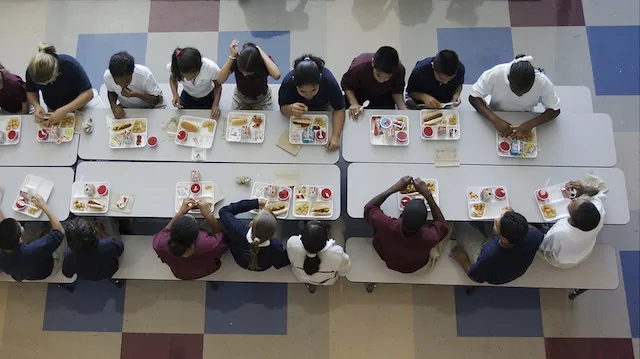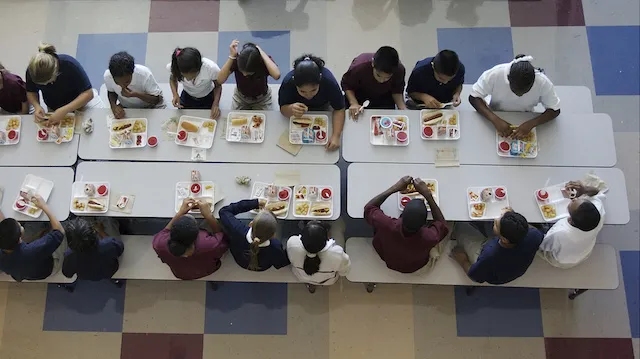School cafeteria lunches have always been known for how terrible they taste, but students at one high school in Chicago believe their school has gone too far.
Students from Theodore Roosevelt High School have shared photos of lunches they deem to be “like prison food,” due to burned patches, moldy spots, bruises and other unpleasant and unappetizing foods.
Early in December, over 500 students went on a lunch strike, or brought lunch from home, to protest the bad-tasting lunches served to them five days a week. A posting from the school’s civics class stated that the students planned another protest for December 17 to show how serious the students are about improving their lunches.
“We are planning a citywide boycott on Thursday, December 17, to show them we mean business. All students should participate,” the civics class wrote in a school-wide notice.
The students hope that their efforts will not only improve lunch quality at their high school, but at all other Chicago schools as well. The students have dubbed this lunch protest “The School Lunch Project: Culinary Denial.” Students are actively sharing pictures of their gross lunches on social media, which show strange-looking food, bruises, mold, low-quality food selections, and burned or freezer-burned meals.
Students state that they believe their school lunches are worse than prison food. The students’ comparison between their food and prison food may be accurate, as the school’s food is supplied by the same food company that supplies meals to the nearby Cook County prison.
In addition to the food tasting and looking bad, the students hope to improve the quality of their food, as well. Current lunch choices are loaded with sugar, sodium and unhealthy fats. Portions are small, and many students are left hungry. Common menu items include pizza, burgers and other unhealthy choices. Students hope that this action will encourage the school to provide healthier eating options, such as a greater selection of vegetable choices, as well as options for vegetarian and vegan students.
According to an investigation by Take Part, about 95 percent of Roosevelt High School students qualify for the lunch program due to low income. Some students also qualify for a reduced-price lunch instead of a free lunch. The high number of students on the program is likely what causes the food quality to be so poor. When hundreds of students are on lunch assistance programs, it becomes harder for schools to stick to their food budget.

The project has already received attention and support from two major organizations, PETA and its subsidiary TeachKind, who have offered to help fund better school lunches. However, school administrators have rejected the offer, stating that if they accept private funding, they will no longer qualify for federal school lunch funding.
If it is federal funding that is forcing the students to eat low-quality, damaged food, perhaps the federal government should look at increasing school lunch funding, or allow schools to receive funding from multiple sources to provide healthy, undamaged meals to students.
—Brenda Priddy
Brenda is a writer, chef and health nut with many years of writing experience in the alternative health industry. She specializes in health news, healthy living, alternative treatments, and healthy recipes. She loves educating others about sustainable, healthy living. Brenda lives in Texas with her husband and two daughters.
Sources:
http://www.takepart.com/article/2015/12/13/chicago-school-lunch
http://www.takepart.com/article/2015/12/01/kids-boycotting-school-lunches-they-say-are-worse-than-prison-food

